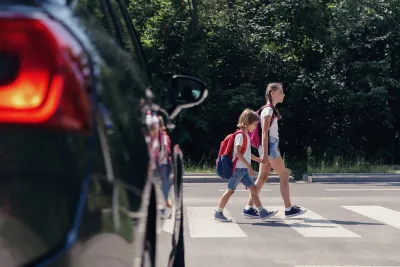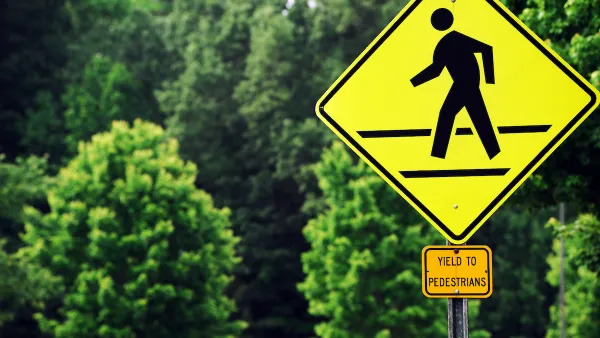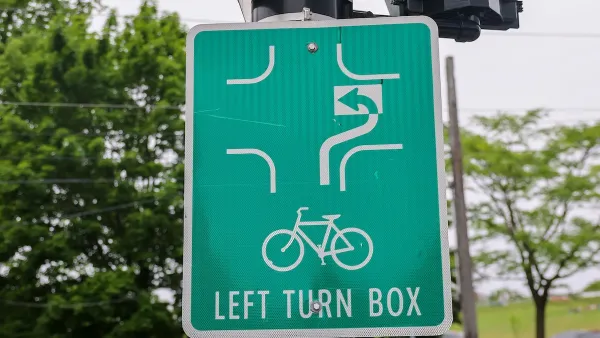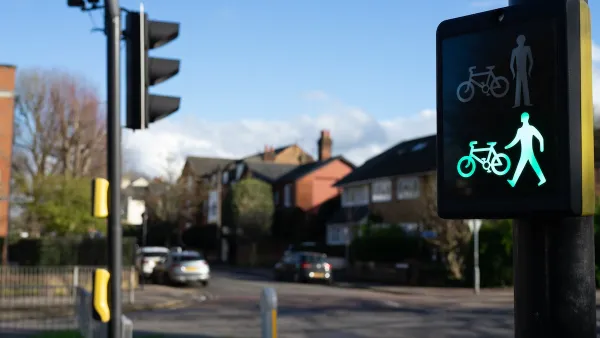The guiding document for U.S. road design is starting to recognize the needs of people walking and biking, but safe streets advocates say more significant changes are needed to reduce the high number of pedestrian deaths and improve connectivity for all road users.

A powerful federal document that dictates street design is getting a makeover after years of advocacy, reports Josh Naramore in Streetsblog USA.
The Manual on Uniform Traffic Control Devices (MUTCD), first created in 1935, governs all road markings, speed limits, road signage, and traffic signals in the United States. The document has rarely been updated, perpetuating outdated and dangerous road design practices. As Naramore explains, “The MUTCD prioritizes moving private vehicles at maximum efficiency and speed above all other goals, including safety, sustainability, and access for people walking, biking, in a wheelchair, or on a bus.”
The December 2023 update to the document signaled a major shift in priorities, focusing for the first time on the safety of pedestrians and other vulnerable road users. However, Naramore argues that it “fails to include many necessary reforms that would create comprehensively safe streets.”
While the update encourages traffic calming and mechanisms that prevent speeding, makes it easier to install crosswalks, and explicitly allows the use of painted bike and transit lanes, it falls short in some areas, such as failing to recognize that not all groups of pedestrians — such as children — can be expected to act “alertly and attentively.” Meanwhile, “To justify installing pedestrian signals, the MUTCD still requires a very high volume of people to be crossing an unprotected intersection — or that transportation officials wait for multiple traffic injuries or deaths to occur.”
Naramore also expresses concern about the MUTCD’s new language on autonomous vehicles, which “normalizes nascent driverless technology without understanding its consequences.” Naramore suggests that safe streets advocates must continue promoting changes that are more in line with the Safe System approach and truly recognize how road design impacts the safety of people inside and outside of cars.
FULL STORY: The 1,000-Page Document That Decides Your Street Designs Just Got a Refresh

National Parks Layoffs Will Cause Communities to Lose Billions
Thousands of essential park workers were laid off this week, just before the busy spring break season.

Retro-silient?: America’s First “Eco-burb,” The Woodlands Turns 50
A master-planned community north of Houston offers lessons on green infrastructure and resilient design, but falls short of its founder’s lofty affordability and walkability goals.

Delivering for America Plan Will Downgrade Mail Service in at Least 49.5 Percent of Zip Codes
Republican and Democrat lawmakers criticize the plan for its disproportionate negative impact on rural communities.

Test News Post 1
This is a summary

Test News Headline 46
Test for the image on the front page.

Balancing Bombs and Butterflies: How the National Guard Protects a Rare Species
The National Guard at Fort Indiantown Gap uses GIS technology and land management strategies to balance military training with conservation efforts, ensuring the survival of the rare eastern regal fritillary butterfly.
Urban Design for Planners 1: Software Tools
This six-course series explores essential urban design concepts using open source software and equips planners with the tools they need to participate fully in the urban design process.
Planning for Universal Design
Learn the tools for implementing Universal Design in planning regulations.
EMC Planning Group, Inc.
Planetizen
Planetizen
Mpact (formerly Rail~Volution)
Great Falls Development Authority, Inc.
HUDs Office of Policy Development and Research
NYU Wagner Graduate School of Public Service





























